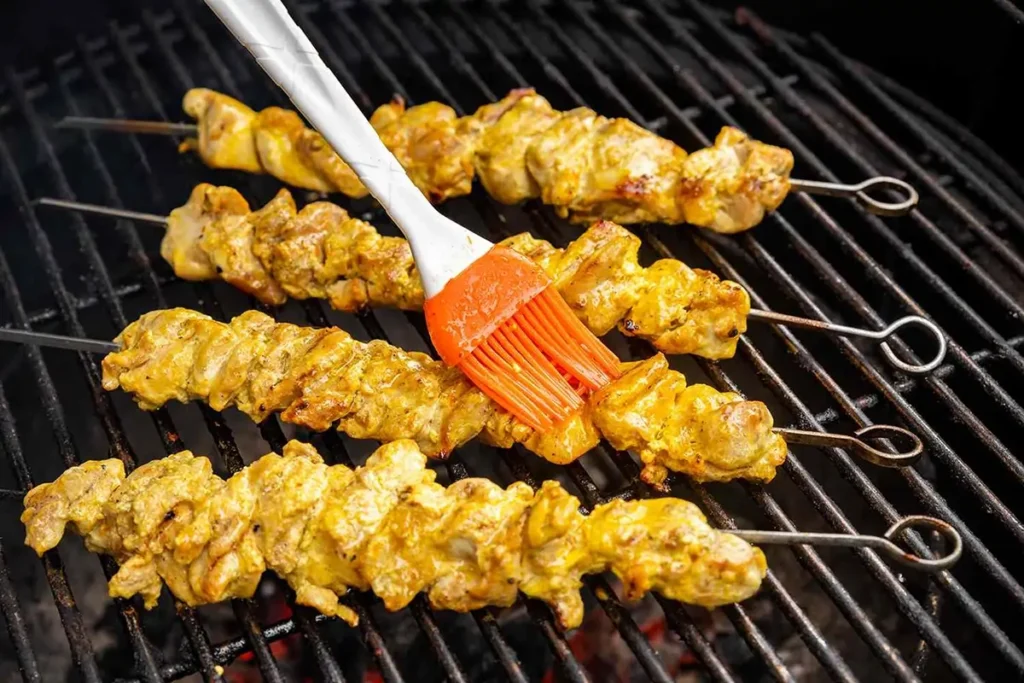
How to make Joojeh Kabab( Persian Saffron chicken Kabab)
There’s something truly special about gathering around a grill with your loved ones, the scent of marinated chicken sizzling in the air, and the vibrant colors of saffron glistening on golden kabobs. If you’ve ever wanted to explore the flavors of Persian cuisine, starting with Joojeh Kabab—saffron and yogurt chicken kabobs—is the perfect way in.
This beloved dish isn’t just a meal; it’s a celebration of Iran’s ancient food tradition and hospitality, capturing the essence of one of the oldest countries in the world. Whether you’re already a fan of famous Iranian popular dishes like Kabab Koobideh and Fesenjan, or you’re just beginning your adventure, learning how to cook Joojeh Kabab at home is a delicious step into Persian culture. This guide will take you through every detail, from blooming saffron to grilling juicy skewers—no experience required!
Ingredients for this Chicken Kabob Recipe
Before we dive into the list of ingredients, it’s important to understand what makes Iranian cuisine so unique and beloved across the world. Iranian food is all about creating harmony between subtle fragrances, bright colors, and balanced flavors. Every ingredient in Joojeh Kabab is chosen to bring out natural aromas and textures—think fresh citrus, creamy yogurt, and, of course, the jeweled essence of saffron.
These elements are not only common in Joojeh Kabab, but also in other Iranian popular dishes like Kabab Koobideh and Fesenjan, all of which speak to the deep culinary heritage of one of the oldest countries in the world. When you prepare this recipe, you’re not just making dinner—you’re bringing centuries of Persian hospitality and taste to your table.
Before jumping in, let’s talk about what makes Joojeh Kabab so delicious. Each ingredient in this list plays a special role in creating those classic Persian flavors:
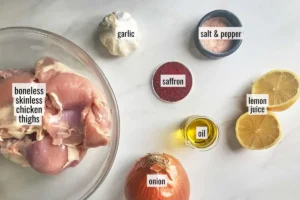
- Chicken (1 kg / 2.2 lbs, boneless): You can use breast for tenderness or thighs for extra juiciness. Cutting the chicken into large chunks helps them stay moist and grill beautifully.
- Onion (1 large, grated or sliced): Onion helps with both flavor and tenderizing the chicken.
- Plain Yogurt (1/4 cup): This adds softness to the chicken and helps build a tasty marinade.
- Olive Oil (3 tbsp): Adds a bit of healthy fat to lock in moisture and help infuse the marinade.
- Lemon Juice (from 1 large lemon): Brings zing and balances flavors—marinating with acidic lemon is key to Persian kabobs.
- Ground Saffron (1/2 tsp, bloomed): The main star! Saffron gives that iconic golden color and an unmistakable aroma, used in many dishes from the oldest country in the world.
- Salt & Pepper (to taste): The essentials!
- Optional: Garlic (2 cloves, minced) & Turmeric (1/2 tsp): For extra layers of flavor, often used in home recipes.
Why all this? Each item is chosen to maximize both taste and tenderness. The combination is simple yet legendary in Iranian homes.
How to Make Joojeh Kabab
Cooking Joojeh Kabab at home is more than just following a recipe; it’s about embracing a piece of Iranian culture that values patience, attention to detail, and the art of marination. Persian cooking is famous for transforming everyday ingredients into dishes that taste both refined and comforting, using techniques that have been passed down in one of the oldest countries in the world. When it comes to making Joojeh Kabab, each step—from marinating in fragrant saffron and yogurt to grilling over hot coals—adds layers of flavor and tenderness that other cuisines might miss.
Whether you’re already familiar with Iranian favorites like Kabab Koobideh or Fesenjan, or you’re exploring these classics for the first time, preparing Joojeh Kabab is a memorable way to capture the balance of tastes and textures that define Iranian popular dishes. Let’s walk through the process together, step by step, so you can create an authentic Persian feast in your own kitchen.
Don’t worry—making Joojeh Kabab isn’t complicated, but it’s all about patience and layering flavor at every stage. Here’s a step-by-step rundown:
Prepare the Marinade:
Mix onion, yogurt, olive oil, lemon juice, bloomed saffron, salt and pepper in a bowl. If using, add garlic and turmeric now too.
Marinate the Chicken:
Add chicken pieces. Mix until everything’s nicely coated. Cover the bowl and let the mixture marinate for at least 3 hours (overnight gives even better flavor).
Tip: The longer, the better!
Skewering:
Thread the marinated chicken onto skewers, making sure not to pack them too tightly. If you’re using wood skewers, soak them in water for 1 hour so they don’t burn.
Grilling:
Heat your grill or barbecue to medium-high. Cook skewers for about 10–15 minutes, turning every few minutes, until chicken is golden and slightly charred.
Grilling this way brings out the smoky flavor typical to many Iranian dishes.
Finish and Serve:
Brush with a little melted butter or another splash of saffron water before serving, just like they do in Tehran’s authentic kabab houses.
How to Bloom Saffron
If you’ve ever wondered why Persian dishes like Joojeh Kabab, seem to glow with color and fragrance, the answer is almost always saffron. Known as the world’s most precious spice, saffron is used in many Iranian popular dishes to add both vibrant color and a subtle, luxurious aroma. But simply tossing saffron threads into a recipe won’t deliver the full experience!
Instead, Iranians practice “blooming” saffron—a special technique that releases all the golden color and delicate flavor locked inside each tiny thread. Blooming is quick and easy, and mastering this step brings the true taste of one of the oldest cuisines in the world to your kitchen. Here’s how you can do it at home and elevate all your Persian recipes.
Saffron is called red gold in Iran for a reason. Blooming (or steeping) saffron properly is a tradition for Iranian popular dishes—here’s how it’s done:
- Grind it: Put saffron threads in a mortar and pestle; gently grind to a fine powder.
- Add hot water: Pour in 2–3 tablespoons of hot (not boiling!) water.
- Let it steep: Wait about 10–15 minutes. The color will turn vibrant yellow-orange.
- Use it: This liquid is your secret weapon. Add it to the marinade and also brush it over the cooked kabob for extra aroma.
Joojeh Kabab types
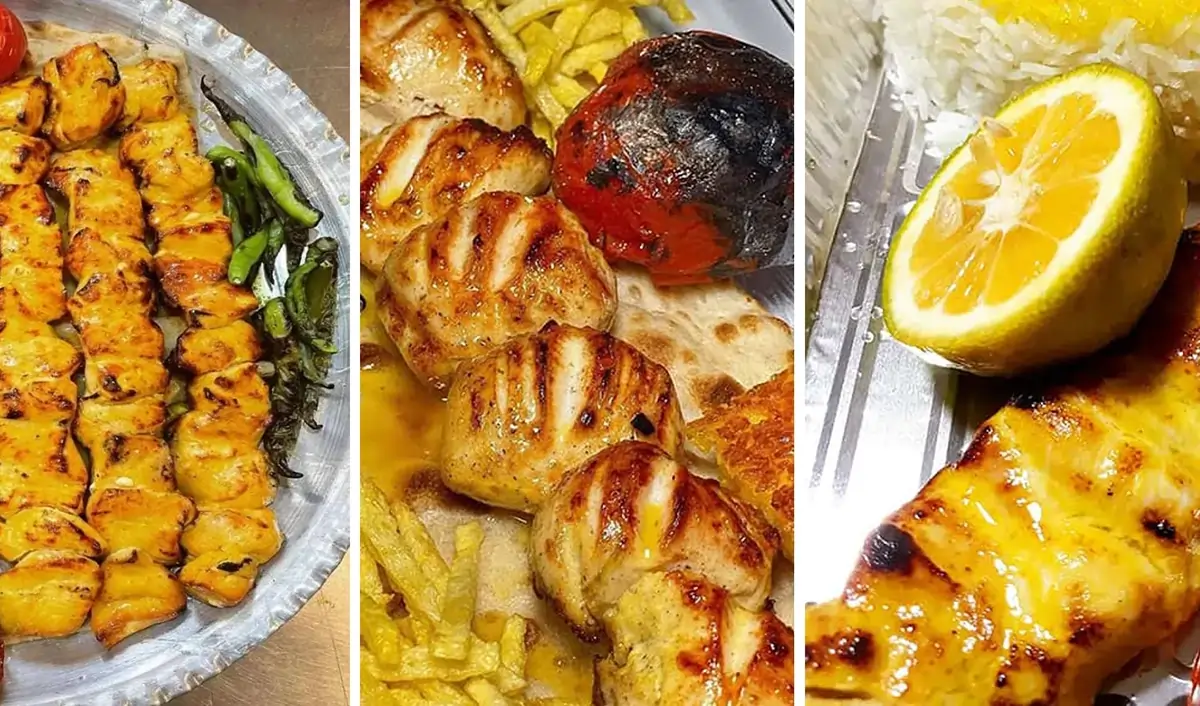
One of the most exciting things about Joojeh Kabab—and really, about Iranian food as a whole—is how even the most classic dishes can take on new personalities depending on region, family tradition, or personal taste. While saffron, yogurt, and citrus are typically at the heart of every good Joojeh Kabab, cooks across one of the oldest countries in the world have always experimented with different marinades, grilling techniques, and even presentation styles.
Some regions add pomegranate juice or sumac for brightness, others use bone-in chicken for extra juiciness, and there are even vegetarian or oven-baked versions gaining popularity outside Iran. Like Kabab Koobideh or Fesenjan, Joojeh Kabab can easily be adapted for special diets and modern kitchens—all while retaining those signature Persian flavors and aromas. Let’s take a look at some of the most popular variations you might want to try at home.
Joojeh Kabab is flexible—over generations in the oldest country in the world, families have added their own twists. Here are a few you can try:
- With Vegetables: Alternate pieces of chicken with bell peppers, tomatoes, or onions on each skewer for color and flavor.
- Bone-in Chicken: Using bone-in pieces tastes richer and juicier, but add a few extra minutes on the grill.
- Extra Saffron or Spices: Add more saffron or even a pinch of cardamom for a luxury version.
- Mix with Kabab Koobideh: Serve your chicken kabobs next to ground meat kababs for a truly Iranian BBQ experience.
- Butter Basting: Brushing the kabobs with melted butter as they grill makes them even more tempting.
Experimentation is at the heart of Persian cooking!
Equipment for cooking Joojeh Kabab
You don’t need fancy tools to cook authentic Joojeh Kabab, but a few key pieces of equipment will help you get the best results. Most Iranians use metal skewers (known as “sikh”) for grilling, which hold the marinated chicken pieces firmly over the flame and help with even cooking.
A charcoal or gas grill is ideal to achieve that classic smoky flavor, but you can also use an oven broiler or even a stovetop grill pan if that’s what you have. Don’t forget a large bowl for mixing the marinade and some tongs for turning the kabobs—simple kitchen equipment, but essential for capturing the real taste of this Persian favorite.
You don’t need a fancy setup to prepare Joojeh Kabab, just a few basic tools:
- Skewers: Either metal (traditional) or wooden.
- Grill/Barbecue: Charcoal or gas both work great, or use your oven broiler.
- Mixing Bowls: For marinating.
- Mortar and Pestle: To grind saffron (or use a spice grinder).
- Basting Brush: For butter or saffron at the end.
Nutrition Facts Table
Knowing what you eat matters! Here’s a nutrition snapshot for a typical serving of Joojeh Kabab (not including rice or bread):
|
Nutrient |
Amount per Serving |
|
Calories |
260 kcal |
|
Protein |
26 g |
|
Fat |
14 g |
|
Carbs |
4 g |
|
Fiber |
0.5 g |
|
Sodium |
290 mg |
|
Cholesterol |
80 mg |
This makes Joojeh Kabab a healthy, high-protein meal, especially when compared with some other Iranian popular dishes like Fesenjan.
What to Serve with Joojeh Kabab
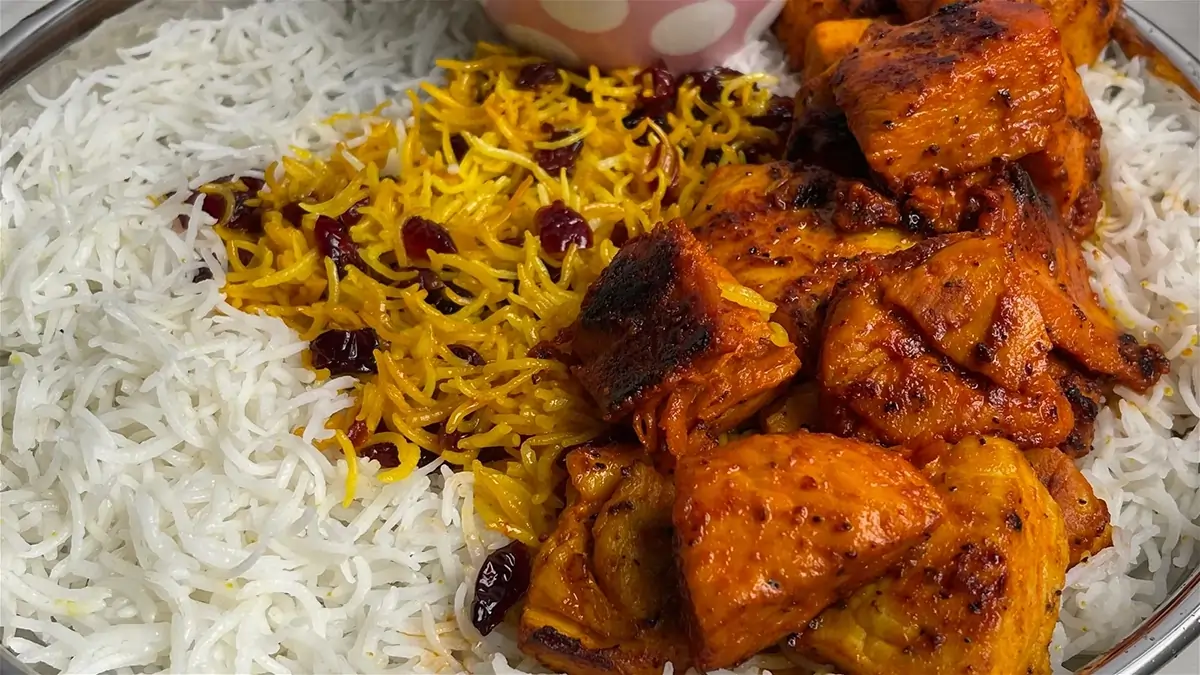
Serving Joojeh Kabab isn’t just about the grilled chicken itself—it’s about creating a well-balanced Persian meal that highlights both flavor and tradition. In Iran, Joojeh Kabab is rarely served alone. It’s typically accompanied by fluffy saffron rice (chelo), grilled tomatoes, and a symphony of fresh herbs (sabzi khordan) for a truly authentic experience. Alongside, you might also find soft lavash or sangak bread, tangy pickled vegetables (torshi), and creamy yogurt.
These sides add color, texture, and the famous balance of tastes that’s at the heart of Iranian cuisine, making your Joojeh Kabab meal feel like a celebration—just as it does in homes across one of the oldest countries in the world.
In Iran, a meal is never just one dish. The sides and extras complete the experience and show why Persian hospitality is famous:
- Persian Rice (Chelo): Fluffy, aromatic rice is the classic base for kabobs. For a treat, make “tahdig” (the crispy bottom layer).
- Grilled Tomatoes and Green Peppers: Grill veggies alongside the chicken for extra color and smoky flavor.
- Fresh Herbs (“Sabzi Khordan”): Basil, mint, tarragon, and parsley add freshness and cleanse the palate.
- Yogurt Dip (Mast-o-Khiar): A cool dip with cucumber and mint keeps the meal refreshing.
- Flatbreads: Serve with sangak or lavash, classic breads from the region.
- Sumac: This tangy spice is sprinkled on kabobs right before eating—don’t skip it!
- Mix and Match: Pair Joojeh Kabab with Kabab Koobideh or a serving of Fesenjan to explore the wide range of Iran’s most popular dishes.
In conclusion…
Making Joojeh Kabab at home is more than simply preparing a meal—it’s a chance to experience the warmth, flavors, and centuries-old traditions of Iranian cuisine right in your own kitchen. This beloved Persian dish, with its tender saffron- and yogurt-marinated chicken, invites you to savor every bite and share meaningful moments with friends or family, just as Iranians do around their tables.
By learning the secrets of marination, blooming saffron, and grilling, you’re not just following a recipe—you’re welcoming the spirit of hospitality and cultural richness from the oldest countries in the world into your life. Whether you’re new to Persian food or a long-time fan of dishes like Kabab Koobideh and Fesenjan, Joojeh Kabab is a delicious way to begin, bringing people together and creating lasting, flavorful memories.
FAQs
- Is Joojeh Kabab the same as Kabab Koobideh?
No, Joojeh Kabab uses marinated chicken pieces, while Kabab Koobideh is made with seasoned ground meat, usually lamb or beef.
- Why does everyone talk about saffron in Persian cooking?
Saffron is key in many famous dishes from one of the oldest countries in the world, giving food its beautiful color and unique aroma.
- Can I cook Joojeh Kabab in the oven if I don’t have a grill?
Yes! Use your oven’s broiler or a grill pan for great results.
- Is Joojeh Kabab spicy?
Not at all—its flavor comes from saffron, lemon, and onion, not hot chilies.
- What other Iranian popular dishes should I try?
Definitely try Fesenjan, Ghormeh Sabzi, and Kabab Koobideh to explore the diversity of Persian cuisine.
- Can I make Joojeh Kabab ahead of time?
Yes, you can marinate it a day ahead. Grill just before serving for the freshest taste!

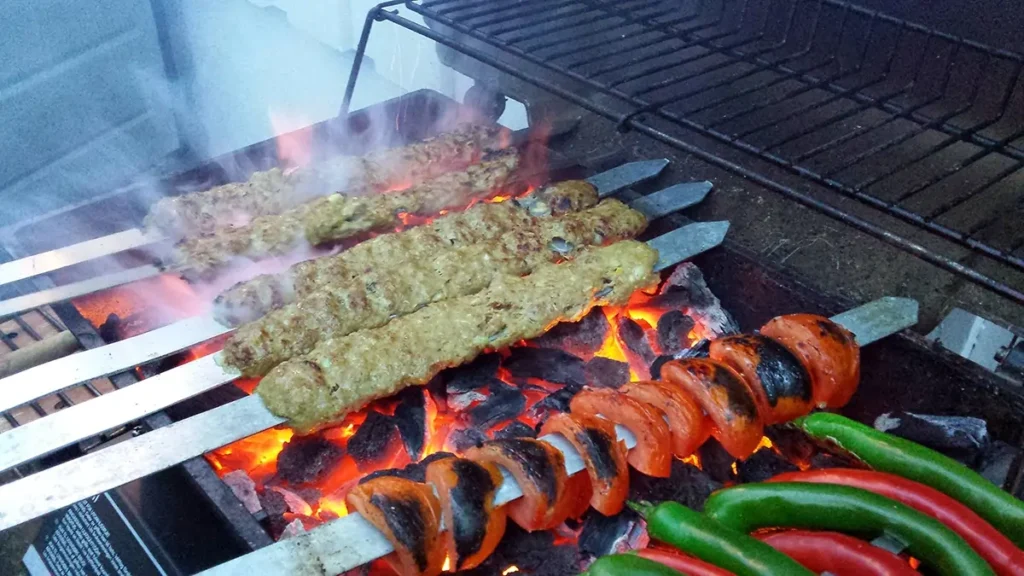
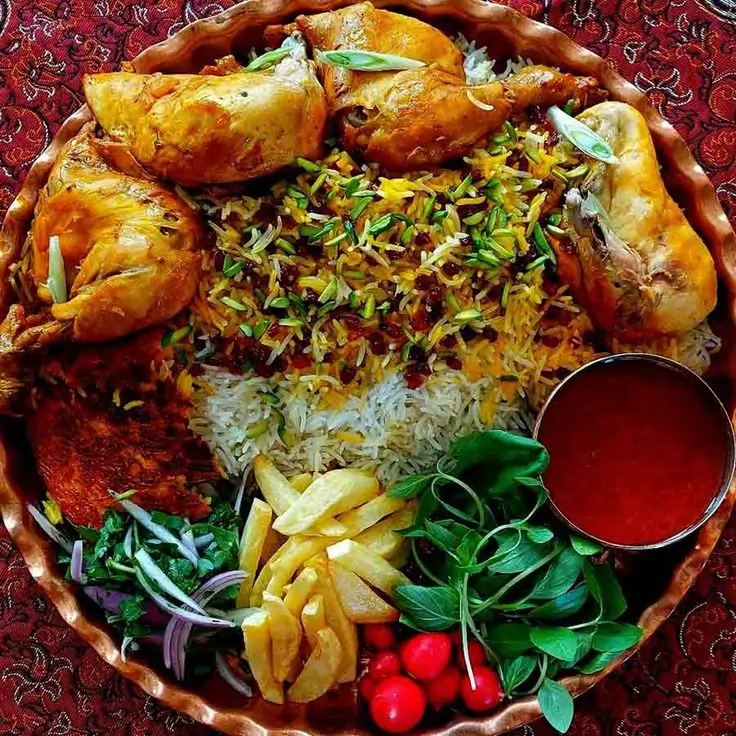
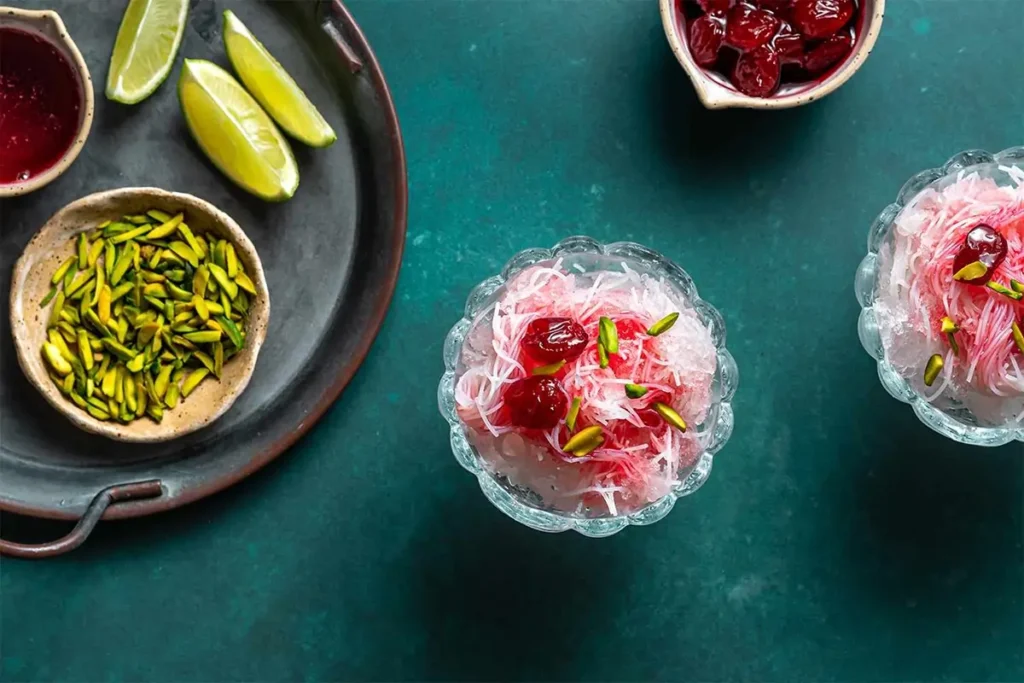


Responses